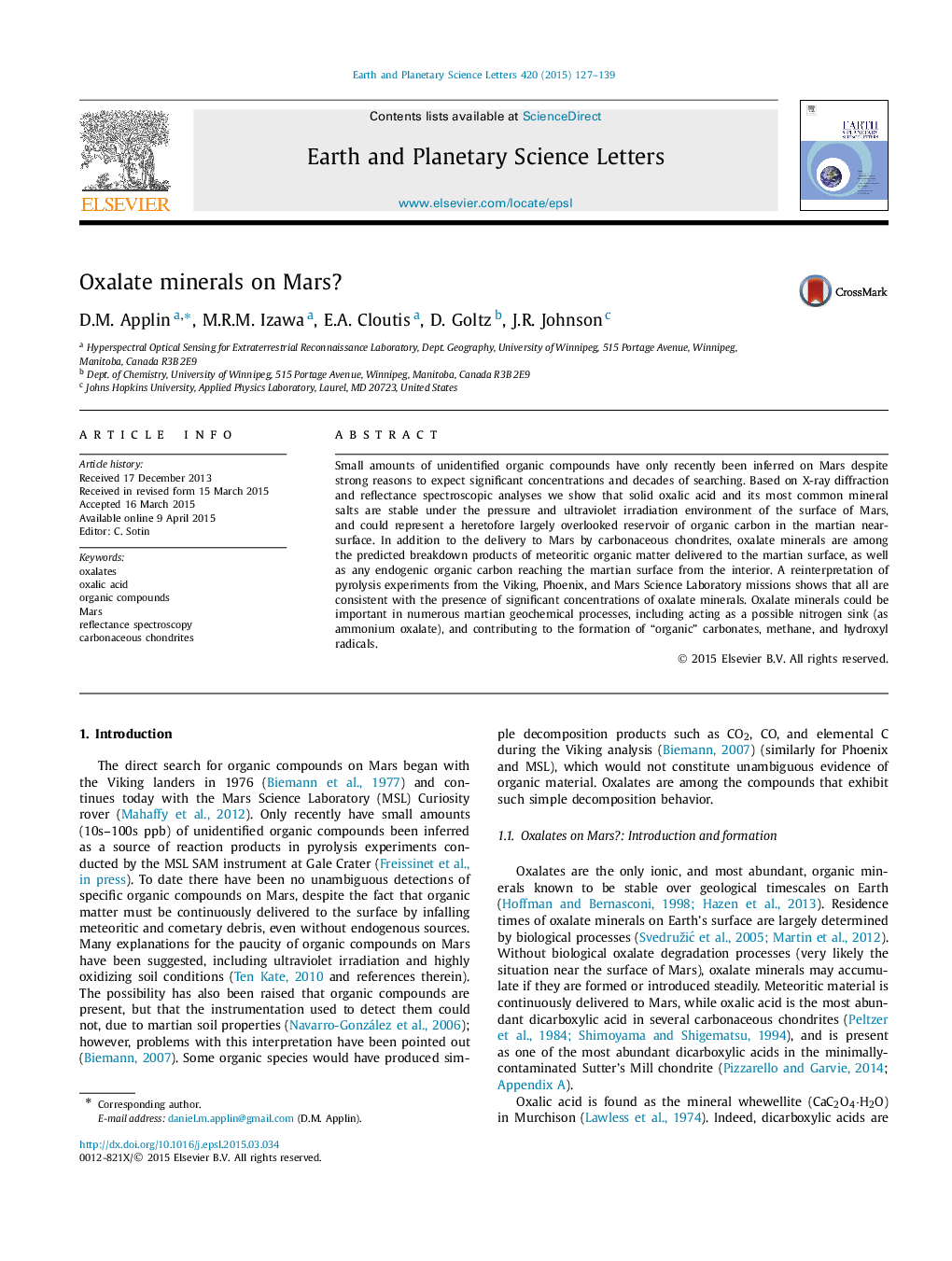| Article ID | Journal | Published Year | Pages | File Type |
|---|---|---|---|---|
| 6428165 | Earth and Planetary Science Letters | 2015 | 13 Pages |
â¢Oxalate minerals are delivered to the surface of Mars in relatively high abundance.â¢Oxalate minerals can be an end-product of meteoritic organic matter decomposition.â¢Oxalate mineral stability could be equal to that of carbonates and sulphates.â¢Oxalates may contribute to CH4, OHâ, and carbonate formation.â¢Oxalates may play a role in martian carbon and nitrogen geochemical cycles.
Small amounts of unidentified organic compounds have only recently been inferred on Mars despite strong reasons to expect significant concentrations and decades of searching. Based on X-ray diffraction and reflectance spectroscopic analyses we show that solid oxalic acid and its most common mineral salts are stable under the pressure and ultraviolet irradiation environment of the surface of Mars, and could represent a heretofore largely overlooked reservoir of organic carbon in the martian near-surface. In addition to the delivery to Mars by carbonaceous chondrites, oxalate minerals are among the predicted breakdown products of meteoritic organic matter delivered to the martian surface, as well as any endogenic organic carbon reaching the martian surface from the interior. A reinterpretation of pyrolysis experiments from the Viking, Phoenix, and Mars Science Laboratory missions shows that all are consistent with the presence of significant concentrations of oxalate minerals. Oxalate minerals could be important in numerous martian geochemical processes, including acting as a possible nitrogen sink (as ammonium oxalate), and contributing to the formation of “organic” carbonates, methane, and hydroxyl radicals.
